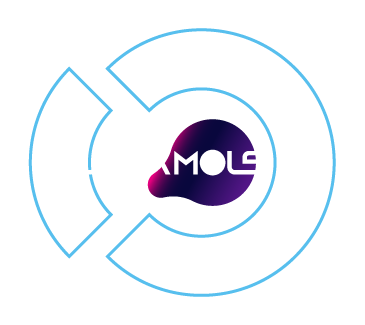Although many people still associate AI with science-fiction films, AI technologies have been around us for more than 50 years and with each new development, it becomes much more commonplace in our daily lives. Artificial intelligence or AI is everywhere and it seems to be part of pretty much everything we do, use or buy nowadays. Even when we talk about cybersecurity, AI is becoming essential as it is particularly well suited to finding patterns in huge amounts of data. Cyberattacks are affecting organizations, governments, and people everywhere and these technologies emerge as a much-needed tool helping them increase their efficiency in cybersecurity. And with AI blooming really fast, some questions also appear: Do we really understand what AI is and its importance? And what about machine learning? Has technology started reshaping the future? So in case you are new to AI or just want to clarify some ideas, this article will do the job.
How did it all start
Artificial Intelligence has grown to be very popular in today’s world, but to go back to its roots we must travel to the 20th Century. The term artificial intelligence was coined in 1956, at a conference, at Dartmouth College by John McCarthy, a computer and cognitive scientist, and early AI research began in the 1950s exploring topics like problem-solving and symbolic methods.
But the journey to understand if machines can truly think began much before that. In Vannevar Bush’s seminal work “As We, May Think” in 1945 he proposed a system that amplifies people’s own knowledge and understanding. Five years later Alan Turing wrote a paper on the notion of machines being able to simulate human beings and the ability to do intelligent things, such as play Chess. In the 1960s, the US Department of Defense took interest in this new field and began training computers to mimic basic human reasoning. For example, the Defense Advanced Research Projects Agency (DARPA) completed street mapping projects in the 1970s. DARPA also created intelligent personal assistants in 2003, long before Siri and Alexa became popular.
All this early work broke the ground for the automated reasoning and language processing that we see in computers nowadays designed to complement and enhance human abilities. Today, AI applications can be seen in everyday scenarios such as financial services and fraud detection, retail purchase predictions, and online customer support interactions. But what’s under the term artificial intelligence?
What’s Artificial Intelligence?
Artificial intelligence, or AI, is a broad term representing a range of techniques that allow machines to imitate human intelligence and behave like humans in terms of making decisions, text processing, or translation, for example. As stated simply, AI is trying to make computers think and act like humans. For this process to take place, machines are given or fed data that comes from a wide range of sources that have been designed, collected and chosen by humans. AI systems get smarter with each step of data processing since each interaction allows the system to test and measure solutions, and develop expertise in the task it’s been set to accomplish.
This technology is fulfilled by studying the patterns of the human brain and by analyzing its cognitive process. Rather than serving as a replacement for human intelligence, artificial intelligence behaves as a supporting tool. But for many, this raises another basic and fundamental question: Are humans intelligent enough to have their intelligence as a model?

Why is AI important?
Artificial intelligence technology offers a handful of benefits to help make our lives easier, safer, and more efficient. One of them has to do with automation. This technology is a major tool for humans to forget about redundant and repetitive actions that can perfectly be taken by a device with AI. Let’s not forget that in the case of people with vision problems, the possibility to develop a task or give instructions to a device using their voice is priceless.
Another important asset has to do with accuracy. AI can be trained to become more accurate than humans making it possible for computers to find, analyze and categorize images without the need for additional human programming. A clear example of this is facial matching used in smart borders. AI can be used to help decide whether to admit a traveler into a country or not as well as to enhance the efficiency of government agencies involved in these tasks.
In simple words, this not such new technology can definitely allow us to interact with devices and among us, in more convenient ways, becoming the eyes for human management and supervision.
What is the difference between artificial intelligence, deep learning, and machine learning?
AI, deep learning, and machine learning are connected but are not synonyms. Machine learning and deep learning are subsets of artificial intelligence.
Machine learning refers to the ability of a machine to reason or think without being programmed, so as the concept suggests, machines learn by themselves, without human intervention, using the datasets they are given. Traditional devices are programmed with a certain set of rules in order to know how to do something or carry out an action. Machine learning offers devices the ability to continuously think about how to act based on data they have intake.
Deep learning aims to imitate the human brain in the way it learns. In Machine Learning, humans tell an algorithm what features to learn. In deep learning, the algorithm will extract the features automatically. In other words, deep learning is machine learning, as deep learning algorithms are machine learning algorithms. But their main difference is algorithms in machine learning have a simple structure while deep learning is based on an artificial neural network.
This neural network needs less human intervention and has larger data requirements than traditional machine learning.
Why is Machine Learning so popular?
Machine Learning is definitely not new in case you wonder. Machine learning´s model, based on brain cell interaction, was created in 1949 by Donald Hebb. Hebb wrote a book called The Organization of Behavior, where he presents his theories on neuron communication. After the late 70s, Machine learning evolved on its own and it has become a very important tool for cloud computing and eCommerce, and a variety of top-notch technologies. But due to recent progress in computer processing power, the possibility to apply machine learning to many devices has risen. Smartphones and tablets for example have the processing power and capacity not seen before and the more deep learning is applied, the more humans learn from it and the wider uses that come for it. Alexa or Google Assistant have been made possible through this but the list is not that short. There are lots of places where AI is present.
What about AI uses?
There are really lots of applications that are AI-powered! One of this technology’s strengths has to do with the ability to go through large amounts of data and identify patterns that can become solutions (which would take humans a much longer time). It also allows machines to be smarter, that is to say, simplify processes so they can be accomplished more intuitively, faster, and easily making human life less complicated and enjoyable. Interacting with a phone using just the voice is AI. Accessing an app using your camera to identify your face is also AI but that is not all.
Artificial intelligence may also be an important ally when dealing with cyber security. AI systems can not only recognize cyber threats but prevent them from happening. Guacamole ID, for example, is a zero-friction and passwordless identity authentication app that ensures only the right person is always behind the device. In the case of a remote workforce, it works as an MFA that can also send signals so administrators can react remotely to third-party vulnerabilities. In case a potential threat is detected, the app not only blocks the screen but also records footage of the incident, encrypts it, and sends it to the administrator.
What about privacy in an AI-driven world?
In this information era, people have changed the way they interact with technology and devices. Nowadays just a simple smartphone can collect and transmit data over high-speed global networks, store data in huge data centers, and analyze it. From buying food to zoom meetings or telemedicine, everything takes place in the online world. But with the rise of these online resources, also breaches, fraud, and even identity theft went up. As working from home became the new norm, employees have been targeted by hackers with an increase in cyber risks, opening many doors to data theft and threats. According to an IBM’s security report, data breaches during the pandemic cost companies $4.24 million per incident on average – the highest cost in the 17-year history of the report.
Furthermore, with the advance of this internet-based world, privacy has become a significant issue for small and large companies and even governments. Cyberattacks are increasing rapidly and affecting thousands of organizations and millions of people around the world and this won’t stop if enterprises don’t start working on that. According to data gathered by Anomali and The Harris Poll in 2019, 1 in 5 Americans were victims of ransomware attacks. When talking about privacy issues AI is pointed out as one of its main detractors but the fact is that AI can offer solutions to these privacy problems.
A recent branch of AI research called adversarial learning seeks to improve these technologies and make them less susceptible to such attacks by keeping data stored in different devices. A clear example of this is federated learning, which Google uses in its Gboard smart keyboard to predict which word to type next. Federated learning builds a final deep neural network from data stored on different devices rather than a single data repository. So its paramount benefit is that the original data never leaves the local devices.
The same happens with Guacamole ID, an intelligent application looking to protect computers against unauthorized access by continuous third-step authentication. If an unauthorized person tries to look into your information or look over your shoulder, the system locks the computer and doesn’t allow prying eyes to have access to confidential information. The system is cloud-independent and can work without the internet. All the processing happens on the local computer.
The future of AI is not that far away
It’s hard to say how the technology will develop but the first step toward the future is understanding it. As computers and technology evolve, the development of artificial intelligence replacing human workers has become a common fear among some people but the real thing is robots won’t start ruling the world tomorrow, at least not yet.
It is true that with this technology’s progress in the last few years the fear of AI replacing humans in the workforce is not ungrounded as today many tasks that were once executed by them have become automated. So the fear is natural and expected but just to give you some peace of mind and according to a paper published by MIT Task Force on the Work of the Future entitled “Artificial Intelligence And The Future of Work,” the future looks promising.
As stated by MIT experts, AI will continue to drive massive innovation that will fuel many existing industries and could have the potential to create new sectors and lead to create more jobs.
Is it true that only big companies are benefiting from artificial intelligence?
Artificial intelligence made its way into diverse industries, changing the way businesses operate. These technologies have the potential to further optimize and revolutionize a big number of businesses despite the size of the company. With the world being more digital than ever, algorithms and AI models are becoming more sophisticated. Also, the volumes of data generated are increasing enormously and not only big enterprises but also small and medium ones need to start diving into the AI world finding new ways to improve their operations.
Using AI, businesses can manage better products, automate services and be proactive with customer data. Adopting AI solutions may for example help companies learn about the power of automating their systems instead of doing it manually and helping them achieve greater efficiency, reducing errors, and last but not least, obtain greater profits.
But automation is not the only way to boost enterprises. AI may be really helpful in scheduling workers, security, customer appointments, and marketing among others. There are many AI solutions available in the market today. So what enterprises should look for are those that are aligned with their business needs, culture, and overall mission, in order to achieve competitive advantage and change business for the better. There are many paths to AI in each industry and enterprise and what’s important is to build a strong foundation for an AI-powered future.
Which countries are leading the way in AI?
Although you may think the US is leading the way in AI development, it’s not the only one. Europe and China are playing hard as well. China’s active involvement in this field is an interesting case to dive deeper into. When talking about their output of AI-related research it increased by just over 120%, whereas output in the US increased by almost 70%. Chinese enterprises such as Alibaba, Baidu, and Lenovo, are investing heavily in AI fields. China aims to a three-step plan to turn AI into a core industry for the country. This AI market was valued at almost 50 billion U.S. dollars in 2020 and seeks to become the world’s leading AI power by 2030.
When talking about investment in this new tech, the 2021 AI Index Report, published by the Stanford Institute for Human-Centered Artificial Intelligence in California, showed that the private investment in AI in 2021 reached $93.5 billion—more than double the total private investment in 2020 and that New Zealand, Hong Kong, Ireland, Luxembourg, and Sweden are the countries or regions with the highest growth in AI hiring from 2016 to 2021.
The future is coming quickly, and artificial intelligence will certainly be a part of it. AI has enormous potential for creating the world a better place and will make people better off in the near future. Now, computers are taking an increasingly greater role in doing the heavy lifting for us, their human partners, and will for sure make us better at what we do expanding the scope of our jobs and enabling us to do things faster and raise our ability and insight along the way.
Developments in artificial intelligence have been sweeping the globe and influencing all businesses so countries must work and invest in building robust AI technologies that have the potential to help grow economies and even contribute to bettering the environment. What’s important at this point is that nations keep developing AI strategies to advance their capabilities, through investment, incentives, and talent development. So with more AI is how the future looks like. The change has come and we must all embrace this new reality.
















